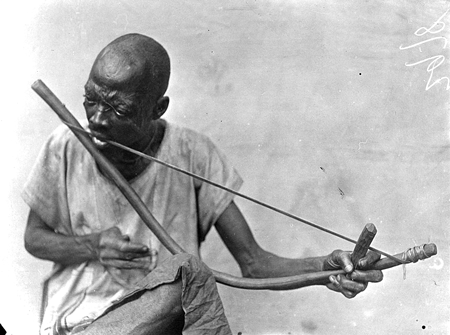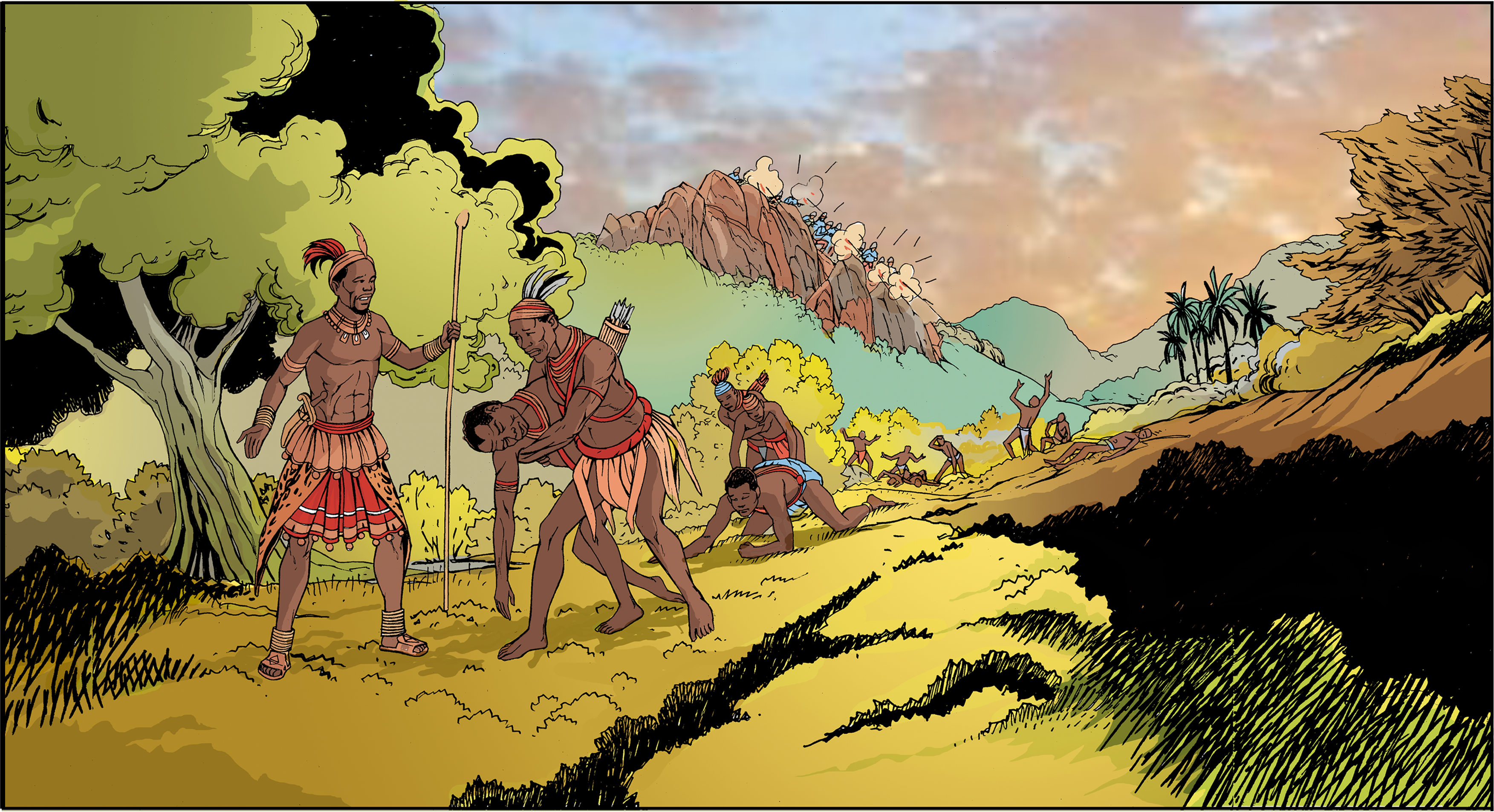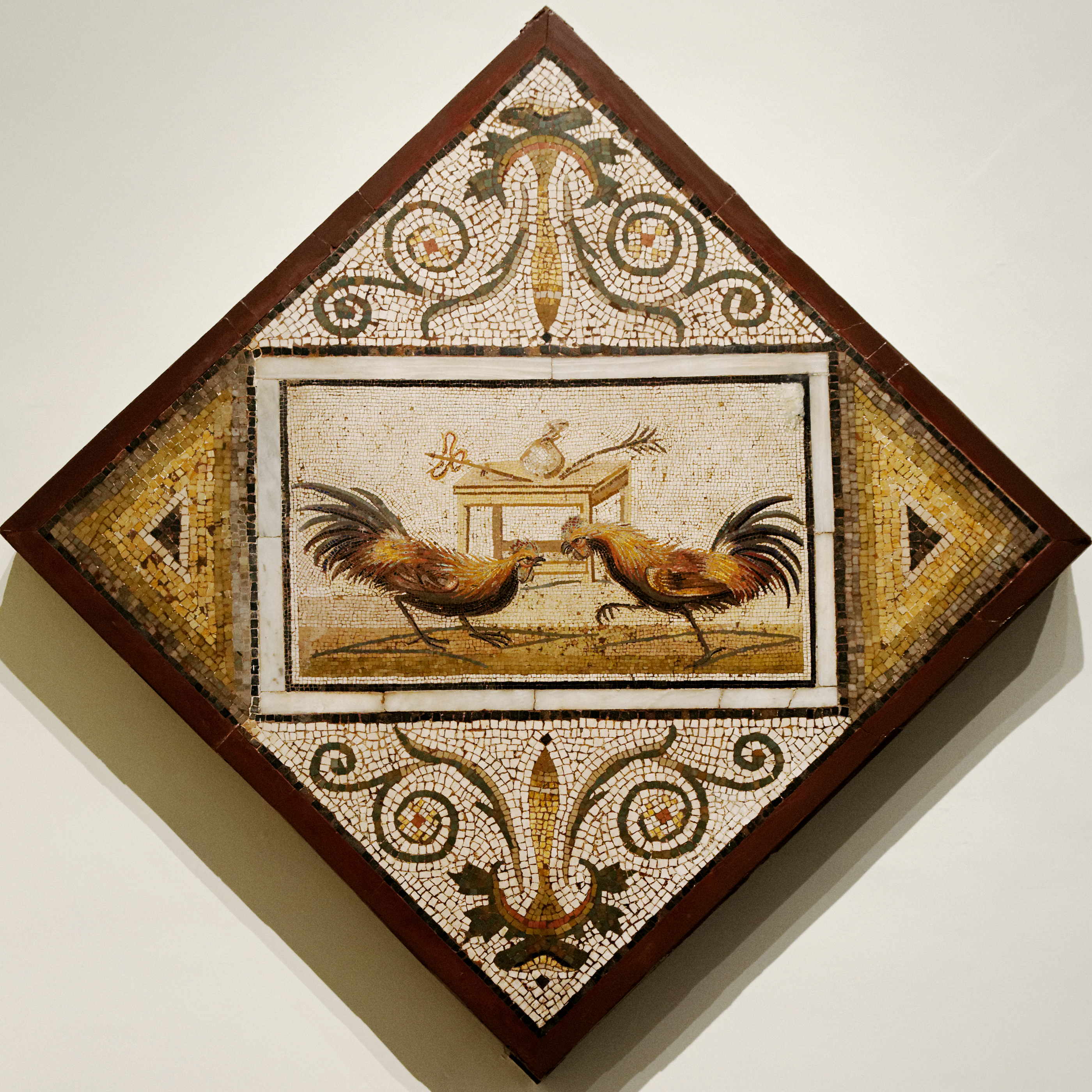|
Danmyé
The Danmyé or Ladja (also known as ''Ladjia'', ''Kokoyé'', ''Wonpwen'') is a martial art from Martinique that is similar to Brazilian capoeira and to other arts in various Caribbean islands (Guadeloupe, Haiti, Jamaica). Ladjia is based on the prominent use of kicks and head butts, as well as hand blows. While punches became more common in the late 20th century, earlier periods featured kicks, sweeps and acrobatic defenses. Danmyé represents martial practice where two players engage in combat within a circle (''won'') formed by supporters (''atlaj'') and spectators, regulated by an orchestra (''mizik-la''). The orchestra typically consists of a drum (''tambou''), played by two people, accompanied by chants, sometimes improvised, and rhythmic Clapping, hand claps. This music is directly connected to the Kalennda-Bèlè dances. One of the characteristics of Danmyé is the use of cunning to deceive the opponent. Name While ''danmyé'' and ''ladja'' are frequently confused now ... [...More Info...] [...Related Items...] OR: [Wikipedia] [Google] [Baidu] |
Capoeira
Capoeira () is an Afro-Brazilian martial art and game that includes elements of dance, acrobatics, capoeira music, music, and spirituality. It likely originated from enslaved Mbundu people, of the Kingdom of Ndongo, in present-day Angola. The Mbundu of Ndongo had a formal military in which soldiers were professionally trained for combat. When Mbundu people were captured and sold into the Atlantic Slave Trade, they would have brought these fighting abilities with them to Brazil, where it developed into Capoeira. It is known for its acrobatic and complex manoeuvres, often involving hands on the ground and inverted kicks. It emphasizes flowing movements rather than fixed stances; the ''List of capoeira techniques#Ginga, ginga'', a rocking step, is usually the focal point of the technique. Though often said to be a martial art disguised as a dance, capoeira served not only as a form of self defense, but also as a way to maintain spirituality and culture. Capoeira has been practic ... [...More Info...] [...Related Items...] OR: [Wikipedia] [Google] [Baidu] |
Engolo
N'golo (anglicized as Engolo) is a traditional Bantu martial art and game from Angola, that combines elements of combat and dance, performed in a circle accompanied by music and singing. It is known as the forerunner of capoeira. Engolo has been played in Africa for centuries, specifically along the Cunene River in the Cunene Province of Angola. Ngolo finds its inspiration in nature, involving the imitation of animal behaviors. Examples include mimicking a zebra's kicking motion or emulating the swaying of trees. This warrior dance is not merely ritualistic; serious injuries have been known to occur during its practice. The combat style of engolo encompasses a variety of techniques, including different types of kicks, dodges, and takedowns, with a particular emphasis on inverted positions. Many of the iconic capoeira techniques, such as '' meia lua de compasso'', scorpion kick, '' chapa'', '' chapa de costas'', '' rasteira'', L-kick, and others, were originally developed wit ... [...More Info...] [...Related Items...] OR: [Wikipedia] [Google] [Baidu] |
Capoeira
Capoeira () is an Afro-Brazilian martial art and game that includes elements of dance, acrobatics, capoeira music, music, and spirituality. It likely originated from enslaved Mbundu people, of the Kingdom of Ndongo, in present-day Angola. The Mbundu of Ndongo had a formal military in which soldiers were professionally trained for combat. When Mbundu people were captured and sold into the Atlantic Slave Trade, they would have brought these fighting abilities with them to Brazil, where it developed into Capoeira. It is known for its acrobatic and complex manoeuvres, often involving hands on the ground and inverted kicks. It emphasizes flowing movements rather than fixed stances; the ''List of capoeira techniques#Ginga, ginga'', a rocking step, is usually the focal point of the technique. Though often said to be a martial art disguised as a dance, capoeira served not only as a form of self defense, but also as a way to maintain spirituality and culture. Capoeira has been practic ... [...More Info...] [...Related Items...] OR: [Wikipedia] [Google] [Baidu] |
Engolo
N'golo (anglicized as Engolo) is a traditional Bantu martial art and game from Angola, that combines elements of combat and dance, performed in a circle accompanied by music and singing. It is known as the forerunner of capoeira. Engolo has been played in Africa for centuries, specifically along the Cunene River in the Cunene Province of Angola. Ngolo finds its inspiration in nature, involving the imitation of animal behaviors. Examples include mimicking a zebra's kicking motion or emulating the swaying of trees. This warrior dance is not merely ritualistic; serious injuries have been known to occur during its practice. The combat style of engolo encompasses a variety of techniques, including different types of kicks, dodges, and takedowns, with a particular emphasis on inverted positions. Many of the iconic capoeira techniques, such as '' meia lua de compasso'', scorpion kick, '' chapa'', '' chapa de costas'', '' rasteira'', L-kick, and others, were originally developed wit ... [...More Info...] [...Related Items...] OR: [Wikipedia] [Google] [Baidu] |
Benin
Benin, officially the Republic of Benin, is a country in West Africa. It was formerly known as Dahomey. It is bordered by Togo to the west, Nigeria to the east, Burkina Faso to the north-west, and Niger to the north-east. The majority of its population lives on the southern coastline of the Bight of Benin, part of the Gulf of Guinea in the northernmost tropical portion of the Atlantic Ocean. The capital is Porto-Novo, and the seat of government is in Cotonou, the most populous city and economic capital. Benin covers an area of , and its population in was estimated to be approximately million. It is a tropical country with an economy heavily dependent on agriculture and is an exporter of palm oil and cotton. From the 17th to the 19th century, political entities in the area included the Kingdom of Dahomey, the city-state of Porto-Novo#History, Porto Novo, and other states to the north. This region was referred to as the Slave Coast of West Africa from the early 17th century due ... [...More Info...] [...Related Items...] OR: [Wikipedia] [Google] [Baidu] |
Nuba Wrestling
Nuba wrestling refers to traditional sports of the Nuba peoples in the Nuba Mountains of South Kordofan state, in southern Sudan. Nuba wrestling is often accompanied by stick fighting tournaments. Techniques The goal of Nuba wrestling is to slam the opponent to the ground. Wrestling is relatively recreational, and serious injuries are rare. Nuba wrestling has no pinning and no submissions. Although there are strikes, these are essentially part of the grappling; in other words, this is not a boxing system, as is, for example, Hausa dambe. Therefore, Nuba wrestling is best viewed as a system of standing grappling, historically practiced naked, but in towns today practiced in T-shirts and shorts. Nuba stick fighting essentially mimics the movements of fighting with spear and shield. Little armor is worn, so injuries can be severe. Training Training for both wrestling and stick fighting includes practicing under the supervision of former champions, performing athletic d ... [...More Info...] [...Related Items...] OR: [Wikipedia] [Google] [Baidu] |
Bantu Peoples
The Bantu peoples are an Indigenous peoples of Africa, indigenous ethnolinguistic grouping of approximately 400 distinct native Demographics of Africa, African List of ethnic groups of Africa, ethnic groups who speak Bantu languages. The languages are native to countries spread over a vast area from West Africa, to Central Africa, Southeast Africa and into Southern Africa. Bantu people also inhabit southern areas of Northeast African states. There are several hundred Bantu languages. Depending on the definition of Dialect#Dialect or language, "language" or "dialect", it is estimated that there are between 440 and 680 distinct languages. The total number of speakers is in the hundreds of millions, ranging at roughly 350 million in the mid-2010s (roughly 30% of the demographics of Africa, population of Africa, or roughly 5% of world population, the total world population). About 90 million speakers (2015), divided into some 400 ethnic or tribal groups, are found in the Democratic Re ... [...More Info...] [...Related Items...] OR: [Wikipedia] [Google] [Baidu] |
Knocking And Kicking
Knocking and kicking (or ''yuna onse'') is a little-known traditional African-American dance-like martial art, arguably practiced clandestinely in parts of the Southern US and on the Sea Islands. Music and acrobatic movements made ''knocking and kicking'' inseparable from dance. Knocking and kicking was secretly performed within the black community. These performances were set to the beat of drums, clapping, or the accompaniment of reed pipes known as "quills." Some authors find that this art originates from engolo, and cognates with capoeira and danmyé. Name "Knocking" referred to a specific charging headbutt, mimicking African cattle, resulting in a distinct "knock" sound upon impact. Knocking was connected to kicking in name but often remained distinct. Masters of the kicking art also practiced the more widespread headbutting duels, but in the drum circles, kicks and acrobatics were the primary techniques. Origin Desch-Obi argues that ''Knocking and kicking'' is a com ... [...More Info...] [...Related Items...] OR: [Wikipedia] [Google] [Baidu] |
Gladiator
A gladiator ( , ) was an armed combatant who entertained audiences in the Roman Republic and Roman Empire in violent confrontations with other gladiators, wild animals, and condemned criminals. Some gladiators were volunteers who risked their lives and their legal and social standing by appearing in the arena. Most were despised as slaves, schooled under harsh conditions, socially marginalized, and segregated even in death. Irrespective of their origin, gladiators offered spectators an example of Rome's martial ethics and, in fighting or dying well, they could inspire admiration and popular acclaim. They were celebrated in high and low art, and their value as entertainers was commemorated in precious and commonplace objects throughout the Roman world. The origin of gladiatorial combat is open to debate. There is evidence of it in funeral rites during the Punic Wars of the 3rd century BC, and thereafter it rapidly became an essential feature of politics and social life in the ... [...More Info...] [...Related Items...] OR: [Wikipedia] [Google] [Baidu] |
Cockfight
Cockfighting is a blood sport involving domesticated roosters as the combatants. The first documented use of the word gamecock, denoting use of the cock as to a "game", a sport, pastime or entertainment, was recorded in 1634, after the term "cock of the game" used by George Wilson, in the earliest known book on the sport of cockfighting in ''The Commendation of Cocks and Cock Fighting'' in 1607. But it was during Ferdinand Magellan's voyage of discovery of the Philippines in 1521 when modern cockfighting was first witnessed and documented for Westerners by the Italian Antonio Pigafetta, Magellan's chronicler, in the Kingdom of Taytay. The gamecocks (not to be confused with game birds) are specially bred and conditioned for increased stamina and strength. Male and female chickens of such a breed are referred to as gamefowl. Cocks are also bred to be aggressive towards other males of their species. Wagers are often made on the outcome of the match, held in a ring called a ... [...More Info...] [...Related Items...] OR: [Wikipedia] [Google] [Baidu] |
Africa
Africa is the world's second-largest and second-most populous continent after Asia. At about 30.3 million km2 (11.7 million square miles) including adjacent islands, it covers 20% of Earth's land area and 6% of its total surface area.Sayre, April Pulley (1999), ''Africa'', Twenty-First Century Books. . With nearly billion people as of , it accounts for about of the world's human population. Demographics of Africa, Africa's population is the youngest among all the continents; the median age in 2012 was 19.7, when the worldwide median age was 30.4. Based on 2024 projections, Africa's population will exceed 3.8 billion people by 2100. Africa is the least wealthy inhabited continent per capita and second-least wealthy by total wealth, ahead of Oceania. Scholars have attributed this to different factors including Geography of Africa, geography, Climate of Africa, climate, corruption, Scramble for Africa, colonialism, the Cold War, and neocolonialism. Despite this lo ... [...More Info...] [...Related Items...] OR: [Wikipedia] [Google] [Baidu] |








